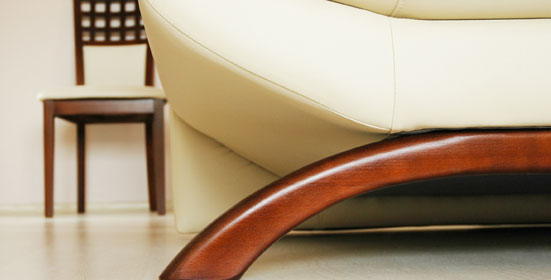Floors
Terracotta floor
Terracotta is a material made of soil mixed with water and baked at high temperature. It’s a very strong floor and the proof is the flooring of old mansions and churches. It had been chosen to pave old town’s street and squares for its resistance to intense cold and wear.
There is no problem if you choose it in cold areas where it freezes in winter or in sea areas because it is unassailable by saltness. Terracotta is refractory to summer heat and doesn’t dissipate heat in cold seasons.
It’s impermeable, it doesn’t absorb spots, its maintenance is easy and it doesn’t create combination problems because terracotta has a colour that goes with everything.
That terracotta floor don’t keep surprises or disappointments, you must follow supplier’s instructions and dedicate certain preliminary attentions to terracotta, which are absolutely necessary.
After it has been laid and dried, you must wash the floor with water where 20% of muriatic acid has been added. You must rub with a scrubbing brush in each area of the room.
Rinse carefully and after two or three days lay raw unseed oil using a flat brush. Wait four or five hours and then lay bee wax even with an outline. If terracotta is much absorbent, you must pass unseed oil and wax other three times waiting that it gets dry a couple of days.
Who prefers a darker colouring, can apply a certain treatment (aging treatment), that will make terracotta’s colour like leather: that is to add 2% or 3% bitumen to unseed oil and wax on the basis of the colouring you want. Once you placed furniture in the environment, you can pass a damped floorcloth and silicone wax (half glass each 5 litres of water): this is to eliminate possible streakings and prepare the floor to get wax another time after a month.
After a couple of months you must repeat the same operation. At this point, terracotta floor has exceeded an exacting phase. Then, it can be cleant with a damped floorcloth and sometimes with the polisher. The floor will be waxed once a year. If the initial treatment has been done perfectly, there won’t be problems of spots: any black marks, due to the shuffle of heels, will be removed scrubbing with a floorcloth soaked in wax. For other spots you need only a damped floorcloth. It’s absolutely advised against solvents and detergents. Terracotta is produced in different sizes that allow many compositions: squares, rectangles, octagons, fillets, roses, and coffers.
Terracotta’s surface can be smooth, polished, unrefined, rough, or ancient. All suppliers have parties for stairs, handrails, and skirting boards. There is a terracotta tile which is fine half of a normal size tile: it can be applied on an old floor by adhesive. Described preliminary operations are faster for this type of terracotta because it gets dry much before normal size terracotta.
|
Our Category
|
Sponsor
|


